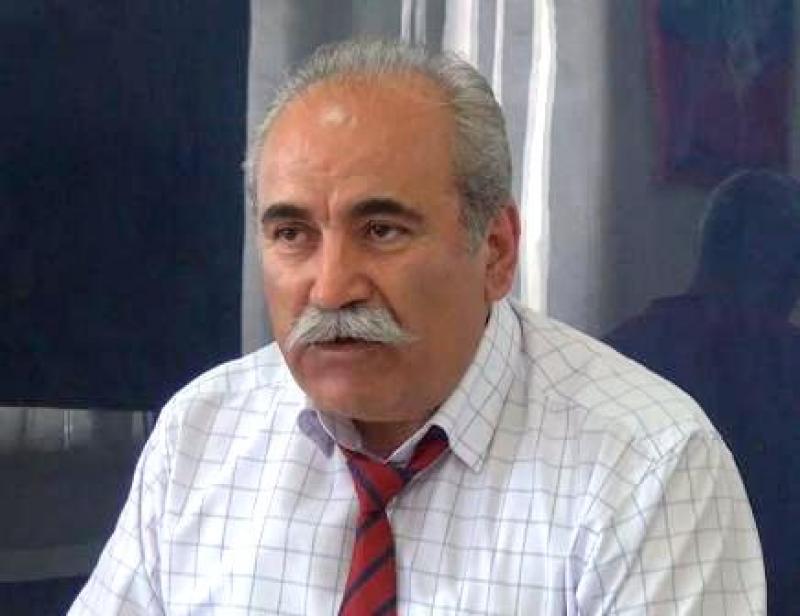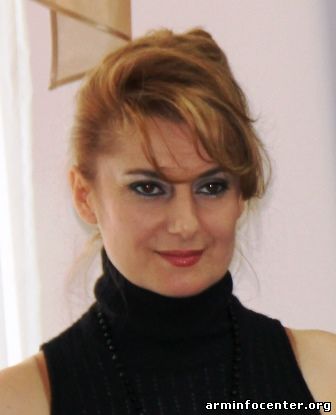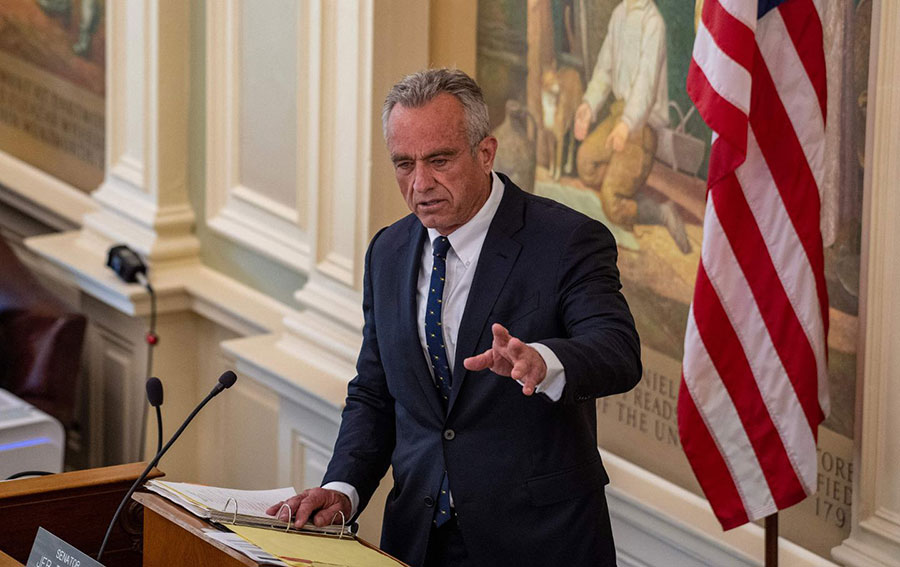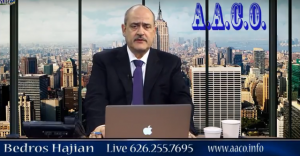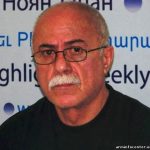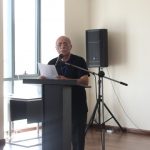Statement by the International Center for Reparations and Restitutions on the preparation of an expert conclusion for the European Court of Human Rights (ECHR) against the Republic of Azerbaijan for the damage caused to the Republic of Artsakh (Nagorno-Karabakh Republic) during the 44-day war of 2020.
PRESS RELEASE
On reparation of an expert conclusion for the European Court of Human Rights (ECHR) against the Republic of Azerbaijan
Headed by the Nobel Prize Nominee in Economics and Peace, Doctor of Economics, Professor, Academician Martik GASPARYAN
International Center of Legal Expertise for Reparations and Restitutions
(full name is International Independent Scientific and Legal Center for Accounting, Analysis, Inventory, Audit, Qualimetric Assessment and Forensic Examination of Material and Non-material damage due to the Armenian Genocide for Reparations and Restitutions) prepares
EXTRAJUDICIAL EXPERT CONCLUSION
on the groundless and false interstate statement of the Republic of Azerbaijan on the violation of the rights and freedom of citizens of the Republic of Azerbaijan (during the military aggression of Azerbaijan against the Republic of Artsakh / Nagorno-Karabakh Republic /) against the Republic of Armenia submitted on January 15, 2021 to the European Court of Human Rights (ECHR),
as well as expert support for the submitted by the Government of the Republic of Armenia on February 1, 2021 to the European Court of Human Rights(ECHR) interstate lawsuit against the Republic of Azerbaijan for convention violations committed by the Republic of Azerbaijan together with the Republic of Turkey and international terrorists ISIL from Syria during the military aggression against the Republic of Artsakh (Nagorno-Karabakh Republic) during the 44-day war of 2020, as well as the ongoing over 100 years of policy of genocide, ethnic cleansing and deportation of the indigenous Armenian population of the Republic of Artsakh (Nagorno-Karabakh Republic) and other autochthonous peoples.
This extrajudicial expert opinion will also include:
Confirmed fact of committing an international crime – military aggression by the Armed Forces of the Republic of Azerbaijan, with the direct participation of the Armed Forces of the Republic of Turkey and international terrorists ISIL from Syria, against the Republic of Artsakh (Nagorno-Karabakh Republic) in order to deprive them of their right to self-determination, freedom and independence, the occupation of a part of its territory, while missile strikes were carried outon civil and military targets and on the territory of the Republic of Armenia (this crime falls under the definition of aggression approved by UN General Assembly Resolution No. 3314 (XXIX) of the December 14, 1974);
numerous facts of war crimes committed against the Armenians of the Republic of Artsakh both military personnel and civilians;
numerous facts of destruction and appropriation of the Armenian historical and cultural heritage of Artsakh – religious (pagan and Christian), cultural and architectural monuments, archaeological sites;
qualimetric assessment, comprehensive expert accounting and analysis of the material and non-material damage caused to the Republic of Artsakh (Nagorno-Karabakh Republic) and directly to the Armenian population of the Republic of Artsakh by the Republic of Azerbaijan, both during the military aggression and in peaceful pre-war and post-war periods;
numerous facts of gross violations of international humanitarian law and human rightsby the Republic of Azerbaijan including cruel and inhuman attitude towardsprisoners of war and the civilian Armenian population, their forcible detainment, as well as mockery of the bodies of the dead servicemen and killed civilians;
numerous facts of manifestations of Armenophobia and criminal policy of inciting hatred against the Armenian people, discrimination of citizens on ethnic grounds, violations of the rights of refugees and internally displaced persons as a result of ethnic cleansing and the Armenian Genocide in Sumgait, Baku, Kirovabad, Shamkhor, Maraga, in the Shahumyan region as a result of Operation «Kol’tso» by the Azerbaijan SSR, in peacetime, from military actions and terrorism of the Azerbaijani authorities.
As a result, hundreds of people died and many more people were injured. More than 500 thousand Armenian citizens of the Republic of Azerbaijan became refugees and internally displaced persons.
Thus, the authorities of the Republic of Azerbaijan organized and carried out a real genocide, ethnic cleansing and deportation against the indigenous Armenian population living on the territory of the Republic;
the illegality and inadmissibility of the settlement of the temporarily occupied territories of the Republic of Artsakh from the Republic of Azerbaijan by foreign mercenaries and international ISIL terrorists from Syria, recruited by Turkey and Azerbaijan;
illegality, illegitimacy and inadmissibility of the so-called “delimitation and demarcation”, determination and change of the state border between the Republic of Armenia and the Republic of Azerbaijan without a bilateral international agreement on the basis of only the administrative-territorial division of the USSR and the Republic of Armenia, as well as the transfer to the aggressor the part of the territories of the communities of Syunik and Tavush regions, part of the Goris-Kapan highway Of the Republic of Armenia, using the GPS system of a foreign private company.
We also note that by an illegal decree of the authorities of the Azerbaijan SSR, on July 7, 1923, Artsakh was dismembered: the Nagorno-Karabakh Autonomous Region (NKAR) was created on one part of it, and the territories of the plain Karabakh came under the direct subordination of the Azerbaijan SSR. At the same time, the Red Kurdistan was artificially formed in the territories of the Lachin and Kelbajar regions of Nagorno-Karabakh. The purpose of creating the latter was to abolish the land connection between Soviet Armenia and the NKAR. In 1929, Red Kurdistan was abolished, and its territory was directly included in the Azerbaijan SSR.
The administrative-territorial division of the USSR, especially illegal and artificial divisions in the Azerbaijan SSR, cannot serve as a basis for the demarcation of the state border, since it arose as a result of the criminal policy of extermination, ethnic cleansing and deportation of Armenians carried out by the Azerbaijani authorities.
And the consequences of the crime cannot give rise to rights (ex injuria non oritur jus).
The struggle between Artsakh and the Armenians of Artsakh is a struggle against the genocidal policy unleashed by the Republic of Azerbaijan, a struggle for survival, for the right to freely determinetheir own destiny in accordance with the right to self-determination.
This extrajudicial expert conclusion was prepared together with the help and use of materials:
Leading legal scholars, economists and culturologists – experts of the International Center of Legal Expertise for Reparations and Restitutions from Armenia, Russia, Germany, Italy, Vatican, Great Britain, Bulgaria, Argentina, USA, Austria, Czech Republic, Israel, Japan, Switzerland, Lebanon, Norway , Spain, Greece, Cyprus;
Members of the international communityof legal expertiseof anthropocide, genocidescholars and Armenologists from Europe, Russia and Armenia;
Documents and decisions of the London conferences (February 12 – April 10, 1920), the Report-statement of the Special Commission of the Paris Peace Conference on the determination of the borders of Armenia, (February 24, 1920), the conference in San Remo (April 19-26, 1920.) within the framework of the Paris Peace Conference of the countries-winnersin the First World War, as well as the Sevres Peace Treaty (August 10, 1920), and the Arbitral Award of the 28th US President Woodrow Wilson «On the establishment of the state border between Turkey and Armenia, on the withdrawal of the borders of Armenia to the sea and on the demilitarization of the Turkish territories adjacent to the Armenian border» (November 22, 1920);
Documents and decisions of the Council of the League of Nations and its successor – United Nations Security Council;
Documents and decisions of the OSCE Minsk Group on the peaceful settlement of the Nagorno-Karabakh conflict;
«Council of 12» of All-Armenian intelligentsia;
«Modus Vivendi» Research Center;
Armenian research center ARMAEN;
The Armenian center for warning and prevention of genocides;
Organizing Committee of the International Public Crimes Tribunal on Azerbaijan’s crimes;
Human Rights Ombudsman of the Republic of Armenia;
Human Rights Ombudsman of the Republic of Artsakh (Nagorno-Karabakh Republic);
A research group of experts on developing tools and practical recommendations in the field of overcoming the consequences of the Armenian Genocide – compensation for losses caused to the Armenian people as a result of the Armenian Genocide of the Department of Armenian Studies and Social Sciences of the Institute of history of the National Academy of Sciences of Armenia;
Non-governmental Forensic Institution «Budget. Audit. Outsourcing. Assessment»;
Special Commission of the National Assembly (Parliament) of Western Armenia on the issues of restitution and reparation as a result of the Armenian Genocide;
The Standing Commission of the National Assembly (Parliament) of Western Armenia on the recognition and condemnation of the Armenian Genocide and compensation for the damage thereon;
The Standing Commission of the National Assembly (Parliament) of Western Armenia on issues of indigenous peoples and national minorities;
International Academy of Spiritual Unity of the Peoples of the World (IASUPW);
Armenian International information-analytic, cultural-educational and legal center «ARMINFOCENTRE»;
Information and analytical agency «NOYAN TAPAN»;
The patriotic organization «UKHT ARARATI» and its eponymous analytical and historical journal «Ukht Ararati»;
Moscow monthly «USISAPILE» (Aurora Borealis);
Rostov monthly «Nakhichevan’-on-Don»;
Public-political weekly newspaper “Voice of Armenia»;
«ORER», Armenian European Independent Magazine, (Prague);
Information and analytic agency «REGNUM»;
The Vatican fund «Joseph Ratzinger / Benedict XVI»;
The analytical center of the club of Rome;
International association «Land and Culture», (France);
«Pogos Noubar» library (Paris);
Public organization of sociological and political initiatives «KHACHMERUK»;
International women’s union of Hamshen Armenians «HAMSHENIAN»;
The Coordinating council of the Congress of Refugees from the Azerbaijan SSR;
Representative association of migrants from Armenia in Argentina «ARAMA»;
Association for the protection and Preservation of the Armenian cultural heritage “Pahapan” (France);
Organization «Armenian community Marash», (France);
Assistance fund for children of Armenia and Artsakh «HUYS» («Hope»), France;
Organization of Greeks of Armenia and Artsakh «PATRIDA»;
Organizations of war veterans «Talish – border settlements»;
Analytical journal «Byzantine inheritage»;
Scientific center «KACHAR», Shushi, Republic of Artsakh;
The Russian patriotic movement «ASSYRIA»;
World Armenian Congress;
Union of Armenians of Russia;
Support center for Russian-Armenian strategic and public initiatives;
Institute of Political and Social Studies of the Black Sea-Caspian Region;
Institute of Armenian Studies of Yerevan State University;
Institute of Humanities of Russian-Armenian (Slavic) University;
Open Ecological University of Moscow State University named after M. Lomonosov;
Institute of Oriental Studies of the National Academy of Sciences of Armenia;
Institute of Philosophy, Sociology and Law of the National Academy of Sciences of Armenia;
Matenadaran – Research institute of ancient manuscripts named after Mesrop Mashtots;
Museum-Institute of the Armenian Genocide («Tsitsernakaberd»);
Research Center «Noravank Foundation»;
- Köppen research laboratory of St. Petersburg State University;
Center for the Study of the Middle East and Central Asia (Moscow);
Institute of the Middle East (Moscow);
Working group on recognition – against genocide, for international understanding «AGA», (Germany);
Institute for Security Policy at the University of Kiel (Germany);
Ministerial University named after Wilhelms, (Hamburg, Germany);
International Academy of Sciences «ARARAT» (France);
Institute of Cultural Heritage, Zhejiang University (China);
International journal for the preservation of science in the field of cultural heritage, (Bologna, Italy).
We have also used:
Materials of decisions on the recognition of the independence of the Republic of Artsakh by:
Senate and National Assembly of France, Parliaments of the Netherlands, Luxembourg, Abkhazia, South Ossetia, Transnistria, Legislative bodies (Parliaments) of regions, states and municipalities of France, Italy, the USA, Spain, Australia, Canada, the Czech Republic, Uruguay, Great Britain, Switzerland, Guatemala.
Materials of decisions and Resolutions condemning the military aggression of the Republic of Azerbaijan together with the Republic of Turkey and international terrorists ISIL from Syria against the Republic of Artsakh (Nagorno-Karabakh Republic) during the 44-day war in 2020: The House of Lords of the Parliament of Great Britain, the Parliaments of France, the Netherlands, Luxembourg, Chile, Cyprus, Belgium, Austria, as well as Legislative bodies of numerous regions, states and municipalities of France, Italy, the USA, Spain, Australia, Canada, the Czech Republic, Uruguay, Great Britain, Switzerland.
Materials of decisions of the National Assembly of the Republic of Armenia, the National Assembly of the Republic of Artsakh and the National Assembly (Parliament) of Western Armenia on the Armenian Issue, on the recognition of the independence of the Republic of Artsakh, as well as on the recognition and condemnation of the Armenian Genocide and compensation for damage.
This extrajudicial expert conclusion of the International Center of Legal Expertise for Reparations and Restitutions also uses other legal and political facts, realities and justifications necessary for this Conclusion.
All these materials will be used to prepare a filing to the UN International Criminal Court in the Hague and its prosecutor’s office against the Republic of Azerbaijan, the Republic of Turkey, and from their side involved international terrorists ISIL and mercenaries from Syria to investigate on suspicion of committing war crimes two 100 -years old genocidal machines on the territory of the Republic of Artsakh, including the accusation of genocide and culture genocide of Armenians, other autochthonous peoples of Artsakh and Azerbaijan.
The grounds for filing a claim will be that the Republic of Artsakh within the borders of the Constitution of the State of Artsakh recognized by the Parliaments of France, the Netherlands and Luxembourg is under the jurisdiction of the Hague Court.
More detailed information on this extrajudicial expert conclusion will be presented to the international community and the media in the near future additionally.
We request interested organizations, representatives of the professional expert community, as well as Armenians from all over the world to provide materials and evidence on this case and provide all possible assistance.
Press service
International Center of Legal Expertise for Reparations and Restitutions
20.02.2021
Email: [email protected]




